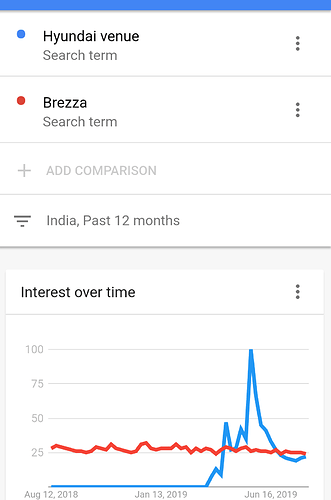I have my doubts on Maruti (or rather Suzuki) as a long term player for a couple of reasons. My reasons are more subjective and not based on financial numbers which have so far not been their biggest problem.
-
The diminishing number of people world-wide who are interested in purchasing a car; much less pay for the upkeep and maintenance of the car. There are a few wonderful studies where millennial’s are less interested in buying cars. A ride sharing solution is the preferred mode of transport. In fact in most of continental Europe the public transport is so good, you rarely need anything else. Maruti’s biggest customer by far is India. Most Indian cities are crowded and have an extremely high density of people. A combination of ride sharing and hopefully better public transportation infrastructure will eat into their profits.
-
Renewable Technology - Maruti is lagging in that department, far behind the Koreans and the Chinese. For those who think making an engine is not difficult, Maruti for nearly the entirety of their time in India so far were dependent on the FIAT sourced Multijet 1.3 diesel engine (for diesels). Same was the case with the Tata’s though they are moving away. So it will take time and effort to develop an electric or other renewable technology engine.
Note: Mahindra has the most experience and seems to the best bet among the Indian players as far as renewable technology is concerned. -
Quality - Maruti is a maker of very poor quality cars and for a long time their only claim to fame was mileage and the fact that we as Indians are rather risk-averse and hence to stick with only known brand of manufacturers. So, once you start moving beyond the 10L point and than the 15L point there are very few Maruti’s that get sold. My hunch is that once the per capita income increases of our country as a whole, the ones who purchase would be less inclined to purchase Maruti’s. In the current scenario as well, Maruti is not top of the mind once you start looking at above 15L cars. About the importance given to safe cars, the less said the better. Most of the cars are flimsily built and would not satisfy any known global quality checks.
All of these are structural issues and would start biting at some point in time and might have an impact in the profitability of the company.
Note: These are my own viewpoints though if anyone is interested in a few of the studies I talked about I can share the links.

